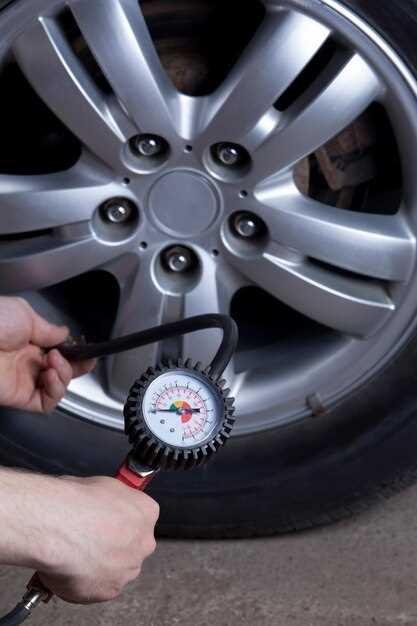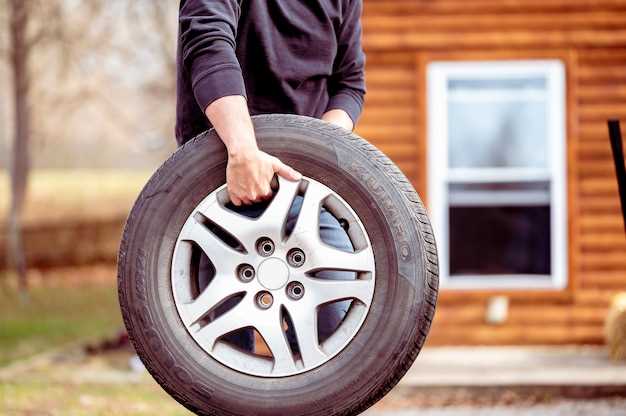
Proper tire pressure is crucial for optimizing vehicle performance on various racing circuits. The ability to adjust tire pressure according to track conditions can significantly affect grip, handling, and overall lap times. Understanding how different surfaces and environmental factors influence tire behavior is essential for any competitive driver.
On dry circuits, maintaining the ideal pressure allows tires to perform at their best, providing maximum contact with the asphalt. Conversely, wet or slippery conditions necessitate adjustments to tire pressure to enhance traction and stability. Drivers must be adept at assessing track conditions and making informed decisions about tire pressure to achieve the best possible performance.
In addition to surface conditions, temperature variations also play a critical role in tire dynamics. As the track heats up, the pressure inside tires naturally increases, which can lead to over-inflation if not monitored carefully. This makes pre-race discussions about tire strategy and pressure adjustments even more important for teams looking to gain an edge on the circuit.
Optimizing Tire Pressure for Wet Track Surfaces
When racing on wet track surfaces, adjusting tire pressure is crucial for maximizing grip and maintaining control. Wet conditions reduce traction, and the right tire pressure can help manage this challenge effectively. Lowering tire pressure slightly can increase the contact patch, allowing the tire to better conform to the surface, which enhances grip on slippery circuits.
In wet conditions, the primary goal is to ensure optimal water evacuation. A lower tire pressure can facilitate this by allowing tires to flex more, thereby creating grooves that help channel water away from the contact area. However, it’s important not to go too low, as excessive pressure drop can lead to tire overheating and increased wear.
Track surfaces may vary significantly, affecting how much pressure should be adjusted. A well-established guideline is to start with a baseline pressure used in dry conditions and reduce it by a small increment, typically around 2 to 4 psi. Monitoring tire temperatures during practice sessions will provide valuable feedback on whether further adjustments are needed.
Moreover, the type of tires used also plays a critical role in pressure optimization. Some tires are designed specifically for wet conditions and may perform better at a higher initial pressure. Always refer to the manufacturer’s recommendations while making adjustments for wet conditions to ensure safety and performance.
Finally, consistent testing and data analysis are essential. Different circuits can react differently under wet conditions, so tire pressure should be fine-tuned depending on track characteristics, weather, and tire wear patterns for optimal performance. This approach not only enhances grip but also contributes to overall race strategy, enabling improved lap times and driving confidence on slippery tracks.
Adjusting Tire Pressure for High-Temperature Circuit Days

High temperatures on the circuit can significantly affect tire performance. Proper tire pressure adjustments are crucial to maintaining grip, stability, and overall vehicle handling during these conditions.
Here are key considerations for adjusting tire pressure on hot circuit days:
- Understand Temperature Effects:
- As temperatures rise, tire rubber becomes softer, and the tire’s contact patch increases.
- Higher temperatures can cause tire pressure to increase naturally, affecting performance and wear.
- Monitor Starting Pressure:
- Begin with the recommended starting pressure based on manufacturer guidelines.
- Verify pressures early in the day when ambient temperatures are lower.
- Adjust Based on Track Conditions:
- If the circuit is particularly abrasive or has high grip, consider decreasing pressure slightly to enhance tire contact and grip.
- Conversely, if the track is smooth and less abrasive, increasing tire pressure can help reduce overheating.
- In-Session Adjustments:
- Keep a tire pressure gauge handy during practice and races to monitor changes.
- Make small incremental adjustments based on temperature readings and driver feedback.
- Aim for Optimal Temperature Range:
- Targeting a specific tire temperature range (usually between 80-100°C) will improve performance.
- Adjust pressure to maintain this optimal range throughout the session.
By carefully adjusting tire pressure on high-temperature circuit days, teams can maximize performance and ensure tire longevity. Continuous monitoring and adjustment are essential to adapt to changing conditions and maintain a competitive edge.
Finding the Right Tire Pressure for Mixed Track Conditions

When racing on a circuit with mixed track conditions, achieving the ideal tire pressure is crucial for optimal performance. Variations in track surface, weather, and temperature can greatly affect the behavior of tires, making adjustments necessary to maintain grip and stability.
Understanding Tire Pressure is essential; it influences the contact patch between the tire and the ground, which directly impacts traction, handling, and overall lap times. Higher pressures can reduce tire deformation, offering quicker response but potentially sacrificing grip. Conversely, lower pressures improve contact surface area, enhancing traction but potentially leading to faster wear and overheating.
To find the right pressure for mixed conditions, start by assessing the current circuit scenario. For instance, if part of the track is wet while other sections are dry, consider using a slightly lower pressure on the wet parts to augment grip and control. On dry asphalt, increasing pressure can help manage heat build-up and prevent excess tire wear.
It is also advisable to gather data after initial runs. Monitor tire temperatures and wear patterns closely to understand how your current pressure is affecting performance. Aim for even tire temperatures across the contact patch; significant discrepancies may indicate the need for adjustments. Use this information to fine-tune the pressure before final runs or qualifying sessions.
Finally, collaborate with your team to document the outcomes of different pressure settings under varying conditions. An iterative approach will help develop a baseline strategy tailored to specific circuits. Successful navigation of mixed track conditions hinges on your ability to adapt tire pressures accordingly.



